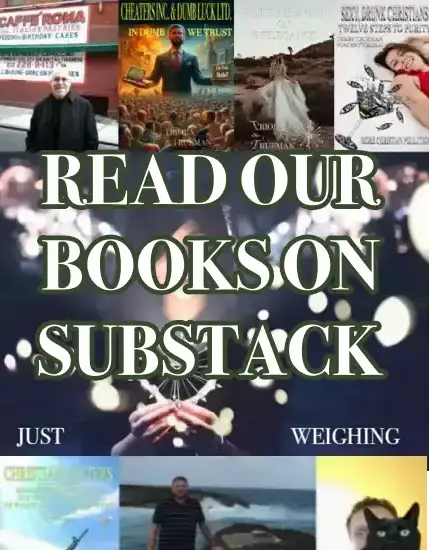How to Avoid Wordiness & Redundancy In Your Writing
Table of Contents
- The Dangers Of Wordiness & Redundancy In Writing
- Identifying and eliminating pleonasms in your content.
- Tips for crafting concise and impactful writing.
- Overcoming verbosity and awkward language in your writing.
- Examples of common pleonasms to watch out for.
- Tools and resources for streamlining your writing.
- Why editing and proofreading are essential for eliminating pleonasm.
- How to master concise and impactful writing.
Pleonasm, a linguistic term derived from the Greek word "pleonazein" meaning "to be excessive," refers to the use of unnecessary or redundant words or phrases that add no value to your message you try to convey. This common pitfall may seem harmless but can hinder writing effectiveness with wordiness that makes your content less concise and impactful.
Wordy and redundant writing wanes reader attention in a struggle to grasp the intended meaning or the loss of patience reading what could have been stated with less words. As writers, our goal, to communicate our ideas clearly and efficiently, and pleonasm hinders that objective. Understanding the dangers of wordiness and redundancy highlights the need to streamline our content to achieve quality authorship.
The Dangers Of Wordiness & Redundancy In Writing
Wordiness and redundancy dilute the impact of your writing, making it less engaging for your audience. Sentences cluttered with unnecessary words and phrases makes extracting key points and understanding the intended message difficult.
Example: In order to be able to effectively communicate with your readers, it is important that you should avoid using words that are not necessary or that repeat the same meaning.
Revised: To communicate effectively with your readers, avoid using unnecessary or repetitive words.
Moreover, wordy and redundant writing can come across as unprofessional and can undermine the credibility of your content.
Example: The author of this book is a renowned expert in the field of psychology and he has a lot of experience and knowledge about human behavior and emotions.
Revised: The author of this book is a renowned psychologist.
Additionally, excessive use of words can lead to verbosity, where your sentences become convoluted and difficult to read, causing reader fatigue, disinterest, and diminished writing effectiveness.
Example: Due to the fact that the weather forecast indicated that there was a high probability of rain, the organizers of the event decided to postpone it until a later date when the weather conditions would be more favorable.
Revised: The organizers postponed the event because of the rainy forecast.
Eliminating wordiness and redundancy enhances clarity and impact of your content, ensuring your message resonates with your audience.
Identifying and eliminating pleonasms in your content.
To eliminate pleonasms, you need to identify instances, and reviewing your sentences and questioning the need for each word or phrase is perhaps the most effective method. Ask yourself if it adds any new information or if it repeats what you already said. Another useful technique is to read your writing aloud. Hearing and speaking the words helps you catch awkward or redundant phrases you may miss when reading silently. By listening to your words, you can also evaluate their impact and find pleonasms. After spotting pleonasms, you need to remove them without losing clarity so you must use concise alternatives or rephrase sentences to effectively convey the same meaning.
Make your writing clear and impactful by ensuring every word counts.
Tips for crafting concise and impactful writing.
Writing concisely and impactfully takes practice and attention to detail. Here are some tips to help you make your content clear and engaging:
- Choose precise words: Use words that convey your message effectively. Avoid using more words than you need.
- Use active voice: Active voice makes your writing direct and concise. It shows who does what, resulting in a more engaging and impactful tone.
- Trim modifiers: Avoid using too many adjectives or adverbs that do not add much meaning to your sentences. Use descriptive language that clarifies your message.
- Simplify complex ideas: Break down complex ideas into smaller, easier parts. This helps your readers understand the information better and improves the flow of your writing.
- Edit ruthlessly: After writing your content, go back and edit it with a critical eye. Remove any redundant phrases, unnecessary words, or convoluted sentences. By editing ruthlessly, you polish your writing and ensure every word counts.
Overcoming verbosity and awkward language in your writing.
How to avoid verbosity and awkward language in your writing Verbosity and awkward language weaken your writing and make it less impactful. To avoid these problems, you need to write clearly and simply. Here are some tips to help you write fluently and avoid redundancy and awkward language:
- Plan your writing: Before you write, outline your thoughts and structure your content. This will help you arrange your ideas and ensure a logical flow in your writing.
- Use transitions: Transitions can help you link ideas smoothly and improve the coherence of your writing. They guide your readers through your content, making it easier for them to follow your logic.
- Avoid jargon and complex language: Unless you write for a specific audience, avoid jargon and complex language. Use clear and concise language that can be easily understood by most readers.
- Read widely: Reading books, articles, and other well-written content can expose you to different writing styles and help you develop a fluent and natural writing voice. Pay attention to how other writers express their ideas concisely and effectively.
- Seek feedback: Share your writing with trusted people and ask for their feedback. They can provide useful insights on areas where your writing may be verbose or awkward, helping you improve your style.
Examples of common pleonasms to watch out for.
Pleonasms can appear in different forms and can be easily missed. Here are some examples of common pleonasms to avoid in your writing:
- “Final outcome” - The word “final” is redundant as an outcome is already the final result. Use “outcome” instead.
- “Close proximity” - The word “close” adds no additional meaning to proximity, as it already implies being near. Use “proximity” or “nearness” instead.
- “New innovation” - Innovation, by definition, implies something new. Therefore, the word “new” is unnecessary. Use “innovation” or “novelty” instead.
- “Basic essentials” - Essentials are the basic necessities, so the word “basic” is redundant. Use “essentials” or “necessities” instead.
- “End result” - The word “result” implies an end, making “end result” redundant. Use “result” or “outcome” instead.
- “Past history” - History, by definition, refers to the past. Therefore, the word “past” is unnecessary. Use “history” or “background” instead.
- “Free gift” - A gift, by definition, is something given without payment. Therefore, the word “free” is redundant. Use “gift” or “present” instead.
- “Unexpected surprise” - A surprise, by definition, is something unexpected. Therefore, the word “unexpected” is redundant. Use “surprise” or “shock” instead.
- “Advance planning” - Planning, by definition, involves preparing in advance. Therefore, the word “advance” is redundant. Use “planning” or “preparation” instead.
There are many more examples of common pleonasms easily overlooked:
- Advance warning
- Added bonus
- ATM machine
- Basic fundamentals
- Completely annihilate
- Depreciation in value
- Each and every one
- Final conclusion
- Future plans
- HIV virus
- LCD display
- PIN number
- Repeat again
- Safe haven
- Unexpected surprise
By knowing these common pleonasms, you can train yourself to spot and remove them in your writing, making it more concise and impactful.
Tools and resources for streamlining your writing.
In the digital age, there are numerous tools and resources available to help streamline your writing and eliminate pleonasms. Here are some valuable resources to consider:
- Grammarly: Grammarly is a popular writing assistant that can help you identify and correct grammar, spelling, and punctuation errors. It also provides suggestions for more concise phrasing and can help you eliminate pleonasms.
- Hemingway Editor: The Hemingway Editor is a web-based tool that analyzes your writing for readability and clarity. It highlights areas of your text that may be too verbose or contain problematic sentences, enabling you to make necessary revisions.
- Thesaurus: A thesaurus is a valuable resource for finding synonyms and alternative words that can help you avoid repetition and enhance the variety of your vocabulary.
- Style guides: Style guides, such as the Associated Press (AP) Stylebook or the Chicago Manual of Style, provide guidelines on writing conventions and standards. They can help you refine your writing style and ensure consistency in your content.
By utilizing these tools and resources, you can streamline your writing process and produce concise and impactful content more efficiently.
Why editing and proofreading are essential for eliminating pleonasm.
Editing and proofreading are vital steps in the writing process, especially for eliminating pleonasms. After writing your content, you need to review it with a critical eye and make revisions. Here’s why editing and proofreading are important:
- Ensuring clarity: Editing and proofreading help you refine your sentences and communicate your message clearly. By removing pleonasms, you can improve the clarity and impact of your writing.
- Improving readability: Editing helps you fix issues with sentence structure, word choice, and flow. This makes your content more readable and engaging for your readers.
- Enhancing professionalism: Through editing and proofreading, you can avoid errors and make your writing look professional. This boosts your credibility and builds trust with your audience.
- Polishing your content: Editing and proofreading are chances to polish your content and make it shine. By reviewing your writing carefully, you can find areas where you can increase the impact of your message and create a more cohesive piece.
How to master concise and impactful writing.
Mastering concise and impactful writing takes awareness, practice, and attention to detail. By knowing the dangers of wordiness and redundancy, spotting and removing pleonasms, and following the tips given, you can make your writing more concise and engaging for your readers. Remember, writing fluently without redundancy is a skill that you can develop through practice and improvement. Use the editing and proofreading process as an opportunity to refine your content and eliminate pleonasm. With dedication and perseverance, you can master concise and impactful writing, ensuring that your message resonates with your audience and leaves a lasting impression.





